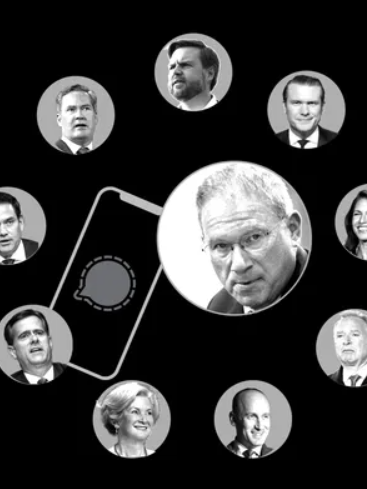Oh, this one had everything — a rogue group chat, a media pile-on, and a slow-drip story that turned out to be more “oops” than outrage. The Atlantic, feeling the buzz fade, went all in on what they thought would be their big scoop: that top Trump officials had leaked classified war plans in a Signal chat. But as the dust settles, the drama’s looking less like a national security breach and more like a misfired narrative that landed with a dull thud.
It’s very clear Goldberg oversold what he had. But one thing in particular really stands out.
Remember when he was attacking Ratcliffe for blowing the cover for a CIA agent? Turns out Ratcliffe was simply naming his chief of staff. https://t.co/BUGbX6gZDZ
— JD Vance (@JDVance) March 26, 2025
Let’s rewind. National Security Adviser Michael Waltz’s team mistakenly added The Atlantic's Jeffrey Goldberg — no fan of Trump, by the way — to a Signal group chat. Inside were names that immediately raised eyebrows: CIA Director John Ratcliffe, Defense Secretary Pete Hegseth, Vice President JD Vance, and others. A Signal chat like this isn’t unusual for today’s national security teams; the app is encrypted, approved, and preloaded on government devices for secure, rapid comms. What’s not normal? Accidentally adding a journalist.
CIA Director John Ratcliffe just destroyed The Atlantic for blatantly making things up.
“The reporter indicated that I had released the name of another country – of an undercover CIA operative.”
“In fact, I released the name of my chief of staff who is not operating… pic.twitter.com/jOEmj3KCQ2
— Media Lies (@MediasLies) March 26, 2025
So The Atlantic thought they’d struck gold. They teased claims that the group shared “classified war plans.” Ratcliffe wasted no time shutting that down, essentially daring them to publish the messages in question. And guess what? Eventually, they did — or at least the part they claimed was “classified.”
What came next? The big reveal fizzled. No classified data. No operational details. No war plans. Just vague references, maybe, to things happening in real-time — but nothing close to the apocalyptic breach it was originally framed as. And just like that, the original story got… quiet. Quiet enough that the phrase “war plans” was quietly scrubbed and edited out in later versions of the piece. You don’t need a press badge to see what that means.
So, let’s me get this straight. The Atlantic released the so-called “war plans” and those “plans” include: No names. No targets. No locations. No units. No routes. No sources. No methods. And no classified information.
Those are some really shitty war plans.
This only proves…
— Pete Hegseth (@PeteHegseth) March 26, 2025
Now, let’s not pretend this wasn’t a mess internally. It was. The Trump administration dodged a missile here — not a real one, but a narrative one — because if any classified material had slipped, this would be a different conversation. But it didn’t. Everyone involved knew better. They used “high side” channels — those secure systems reserved for real intelligence — for anything that needed deep-classification handling. What happened in the Signal chat wasn’t a leak, it was a lapse in contact discipline.
Notice the narrative shift.
First it was “top secret”, then it was “classified”, now it’s “sensitive” pic.twitter.com/6AOincoKYO
— Mostly Peaceful Memes (@MostlyPeacefull) March 26, 2025

